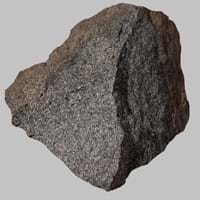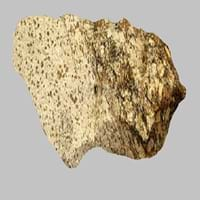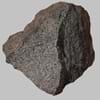Gabbro and Charnockite
Definition
Definition
Gabbro is an intrusive igneous rock which is chemically equivalent to plutonic Basalt
Charnockite is a variety of granite containing minerals like orthopyroxene, quartz, and feldspar
History
Origin
Germany
Tamil Nadu, India
Discoverer
Christian Leopold von Buch
T. H. Holland
Etymology
From Latin glaber bare, smooth, bald
From Job Charnock, an administtrator of East India Company
Class
Igneous Rocks
Igneous Rocks
Sub-Class
Durable Rock, Hard Rock
Durable Rock, Hard Rock
Family
Group
Plutonic
Plutonic
Other Categories
Coarse Grained Rock, Opaque Rock
Coarse Grained Rock, Opaque Rock
Texture
Texture
Phaneritic
Granular
Color
Dark Grey to Black
Black, Grey, Orange, Pink, White
Maintenance
Less
Less
Durability
Durable
Durable
Water Resistant
Yes
No
Scratch Resistant
Yes
Yes
Stain Resistant
Yes
Yes
Wind Resistant
Yes
No
Acid Resistant
Yes
Yes
Appearance
Veined and Shiny
Veined or Pebbled
Uses
Architecture
Interior Uses
Countertops, Decorative Aggregates, Homes, Interior Decoration
Bathrooms, Countertops, Decorative Aggregates, Entryways, Floor Tiles, Homes, Hotels, Kitchens, Stair Treads
Exterior Uses
As Building Stone, As Facing Stone, Garden Decoration, Office Buildings, Paving Stone
As Building Stone, As Facing Stone, Bridges, Paving Stone, Garden Decoration, Office Buildings, Resorts
Other Architectural Uses
Curbing
Curbing
Industry
Construction Industry
As Dimension Stone, Building houses or walls, Cement Manufacture, Construction Aggregate, for Road Aggregate
As Dimension Stone
Medical Industry
Not Yet Used
Not Yet Used
Antiquity Uses
Artifacts, Monuments, Sculpture
Artifacts, Monuments, Sculpture, Small Figurines
Other Uses
Commercial Uses
Cemetery Markers, Commemorative Tablets, Laboratory bench tops, Jewelry, Sea Defence, Tombstones
Curling, Gemstone, Laboratory bench tops, Tombstones
Types
Types
Not Available
Enderbite
Features
Smooth to touch
Available in Lots of Colors and Patterns, It is One of the Oldest, Strongest and Hardest Rock
Archaeological Significance
Monuments
Used
Used
Famous Monuments
Data Not Available
Data Not Available
Sculpture
Used
Used
Famous Sculptures
Data Not Available
Data Not Available
Pictographs
Not Used
Not Used
Petroglyphs
Not Used
Not Used
Figurines
Used
Used
Fossils
Absent
Absent
Formation
Formation
Gabbro, a mafic rock, forms due to cooling and crystallization of magma underneath Earth's surface.
Charnockite is an intrusive igneous rock which is very hard and is formed due to weathering of existing rocks.
Composition
Mineral Content
Augite, Olivine, Plagioclase, Pyroxene
Amphibole, Biotite, Feldspar, Hornblade, Micas, Muscovite or Illite, Olivine, Plagioclase, Pyroxene, Quartz
Compound Content
Aluminium Oxide, CaO, Chromium(III) Oxide, Iron(III) Oxide, Potassium Oxide, MgO, Sodium Oxide, Silicon Dioxide, Sulfur Trioxide
Aluminium Oxide, CaO, Iron(III) Oxide, FeO, Potassium Oxide, MgO, MnO, Sodium Oxide, Phosphorus Pentoxide, Silicon Dioxide, Titanium Dioxide
Transformation
Metamorphism
Yes
Yes
Types of Metamorphism
Impact Metamorphism
Burial Metamorphism, Contact Metamorphism, Regional Metamorphism
Weathering
Yes
Yes
Types of Weathering
Chemical Weathering
Biological Weathering
Erosion
Yes
Yes
Types of Erosion
Coastal Erosion
Chemical Erosion, Water Erosion, Wind Erosion
Properties
Physical Properties
Hardness
7
6-7
Grain Size
Coarse Grained
Coarse Grained
Fracture
Conchoidal
Not Available
Streak
Black
White
Porosity
Highly Porous
Very Less Porous
Luster
Not Available
Not Available
Compressive Strength
225.00 N/mm2
7
Not Available
Cleavage
Not Available
Not Available
Toughness
1.6
Not Available
Specific Gravity
2.86-2.87
Not Available
Transparency
Opaque
Opaque
Density
2.7-3.3 g/cm3
2.6 g/cm3
Thermal Properties
Resistance
Impact Resistant, Pressure Resistant, Wear Resistant
Heat Resistant, Wear Resistant
Reserves
Deposits in Eastern Continents
Asia
India, Russia
India
Africa
South Africa
East Africa, Ethiopia, Madagascar, Morocco, Mozambique
Europe
Germany, Greece, Italy, Scotland, Turkey
Albania, Romania, Scotland, United Kingdom
Others
Greenland
Not Yet Found
Deposits in Western Continents
North America
Canada, USA
USA
South America
Brazil, Colombia, Venezuela
Brazil, Colombia, Venezuela
Deposits in Oceania Continent
Australia
New Zealand, Queensland
Central Australia, Western Australia
All about Gabbro and Charnockite Properties
Know all about Gabbro and Charnockite properties here. All properties of rocks are important as they define the type of rock and its application. Gabbro and Charnockite belong to Igneous Rocks.Texture of Gabbro is Phaneritic whereas that of Charnockite is Granular. Gabbro appears Veined and Shiny and Charnockite appears Veined or Pebbled. The luster of Gabbro and Charnockite is not available. Gabbro is available in dark grey to black colors whereas Charnockite is available in black, grey, orange, pink, white colors. The commercial uses of Gabbro are cemetery markers, commemorative tablets, laboratory bench tops, jewelry, sea defence, tombstones and that of Charnockite are curling, gemstone, laboratory bench tops, tombstones.
|
||
|
||
|










